The document discusses the changing landscape of academic publishing, highlighting the increasing number of PhDs awarded without a corresponding rise in permanent positions, leading to a saturated postdoc market. It criticizes the academic publishing model, emphasizing issues with both traditional and open-access journals, which are often seen as profit-driven and lacking rigorous peer-review processes. The author envisions a new model for science 2.0 that integrates data, code, and publications in open repositories, encouraging collaboration and transparency in research.
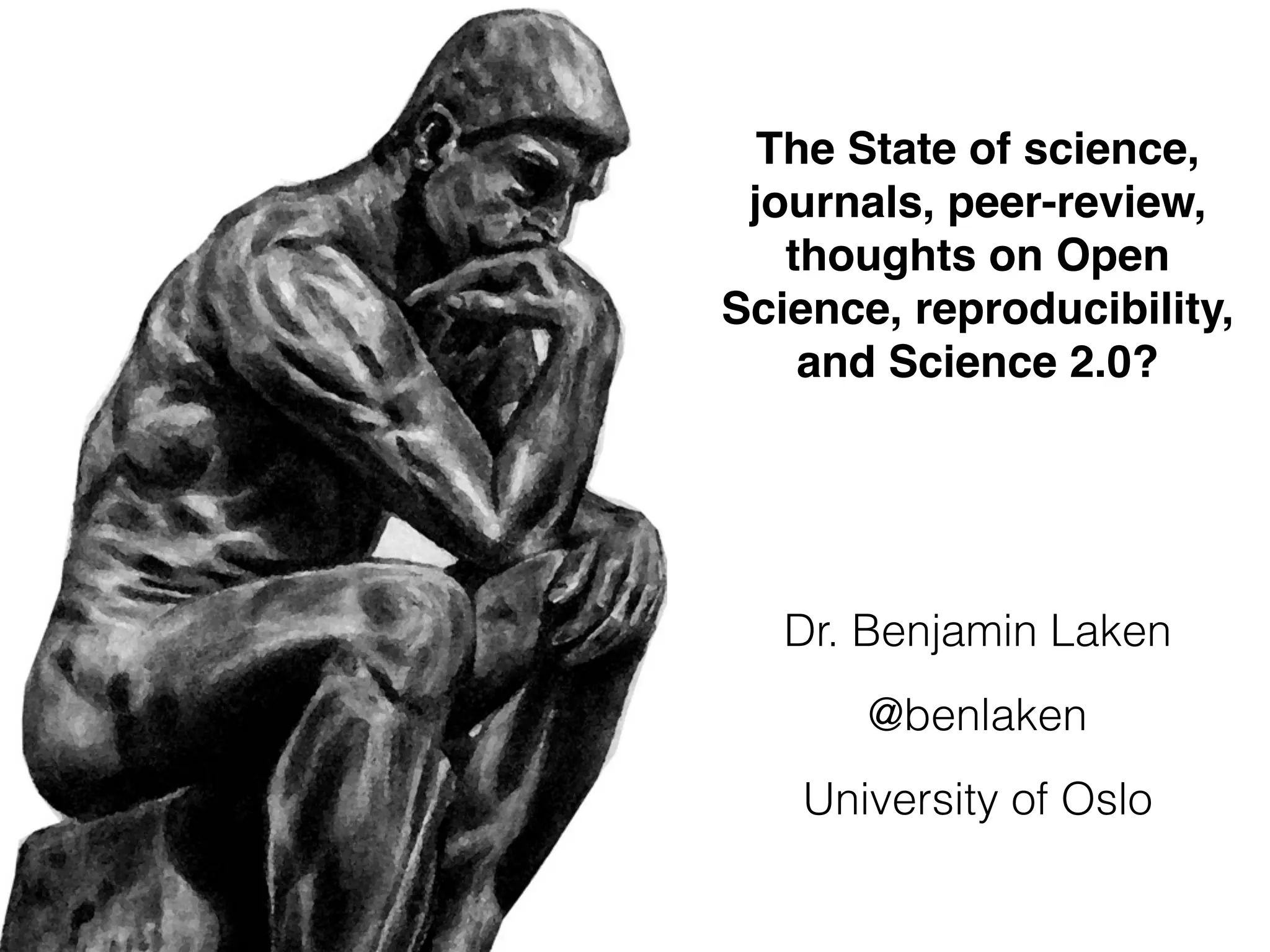
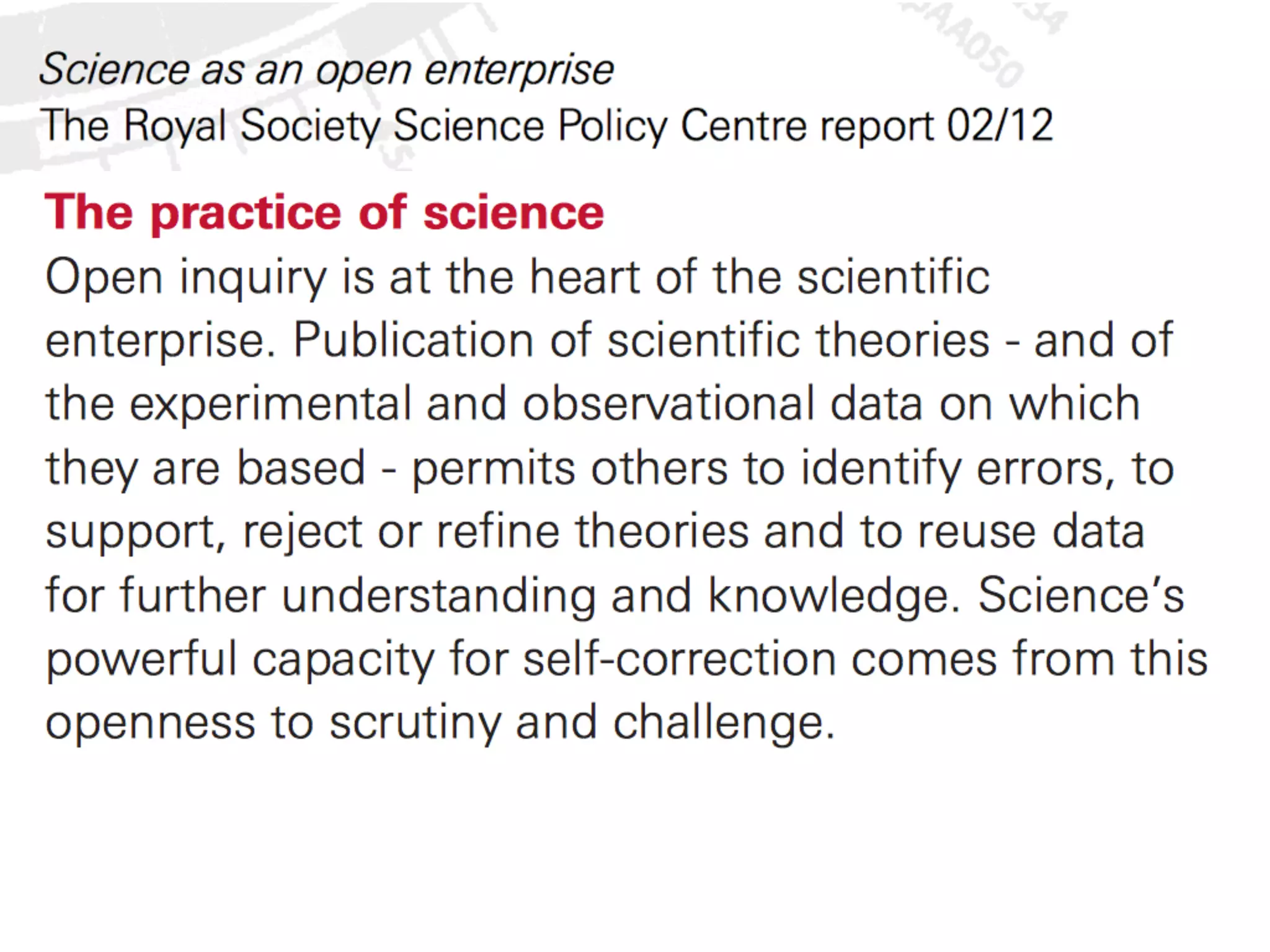
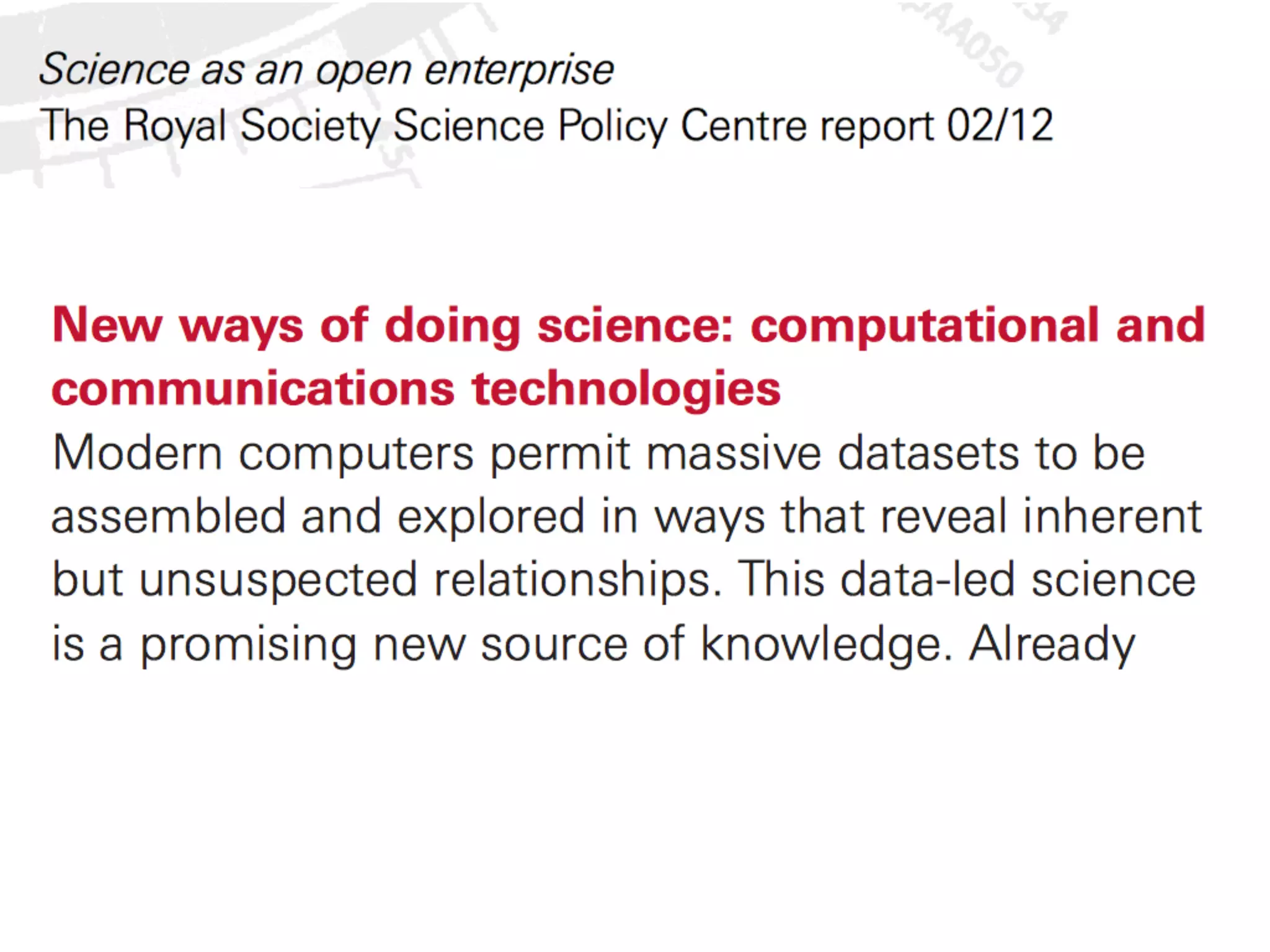
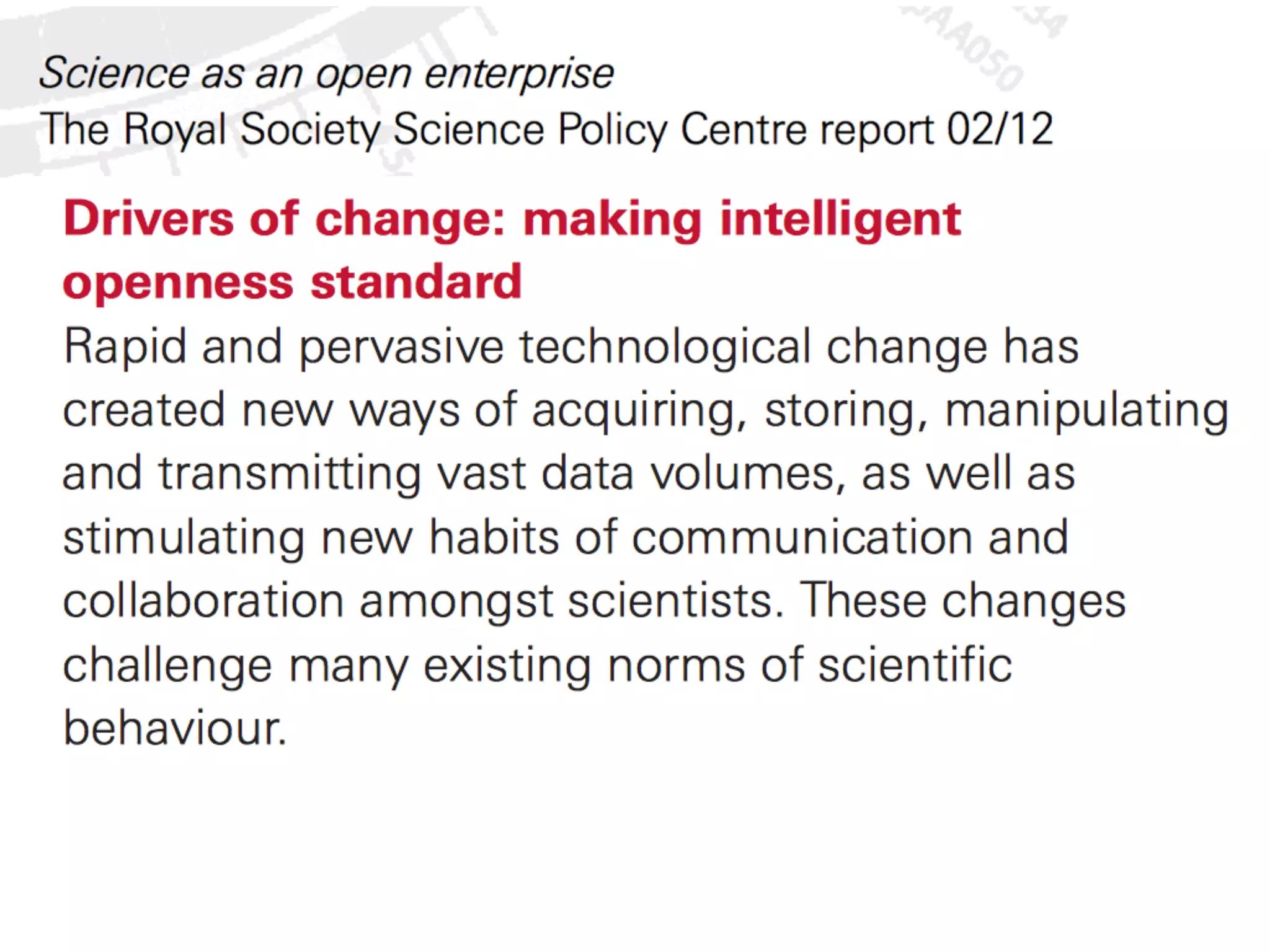
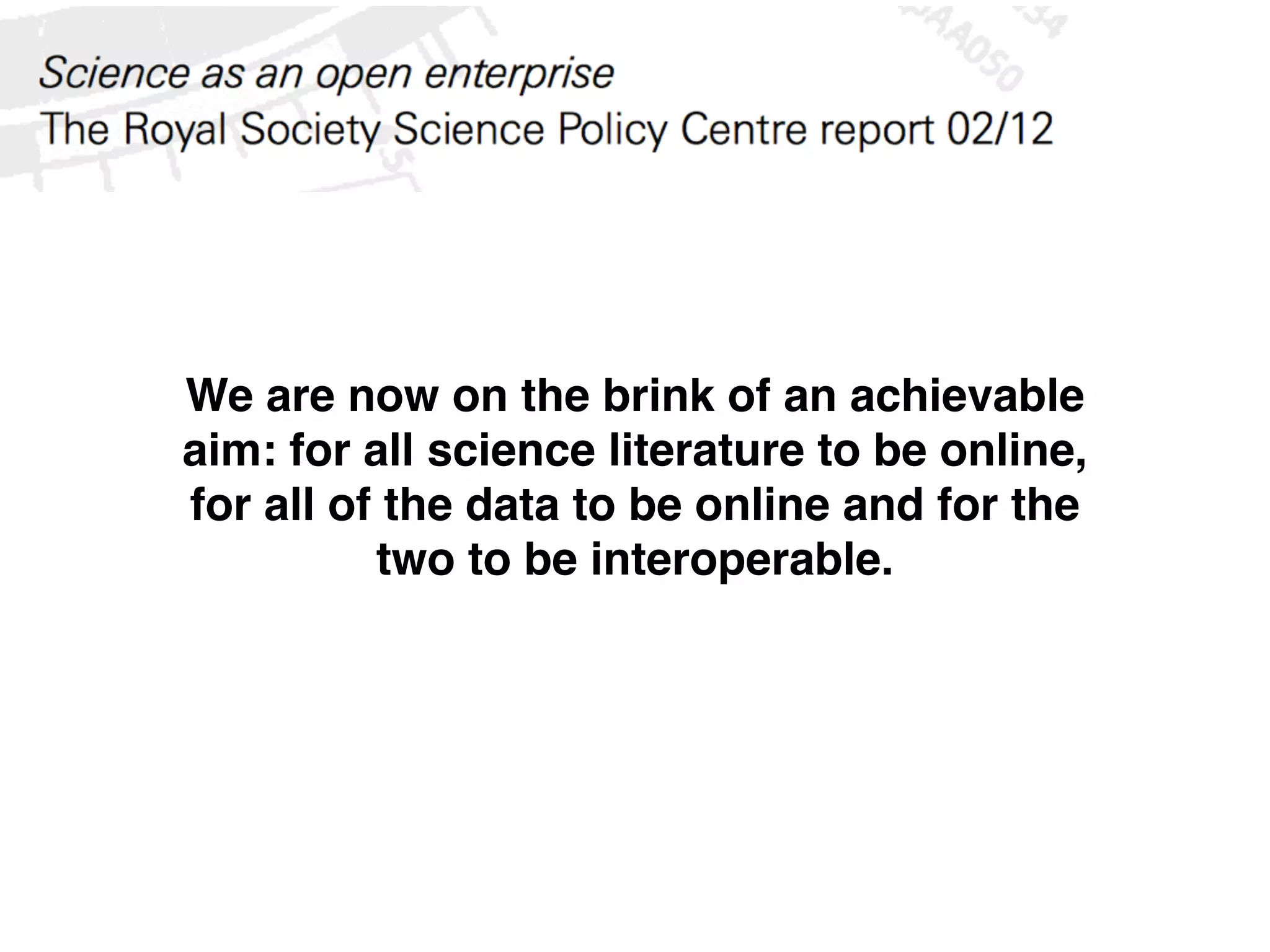
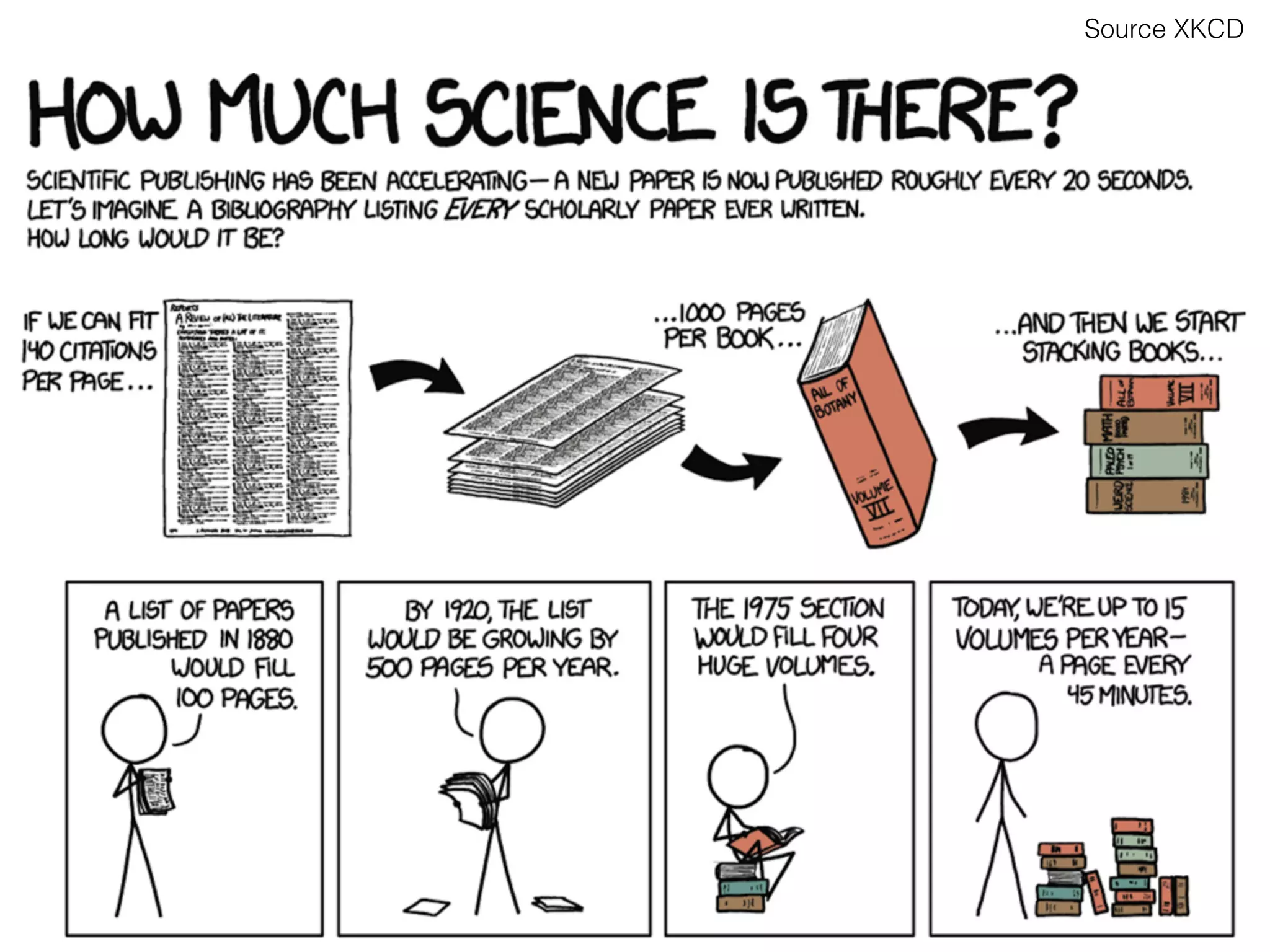
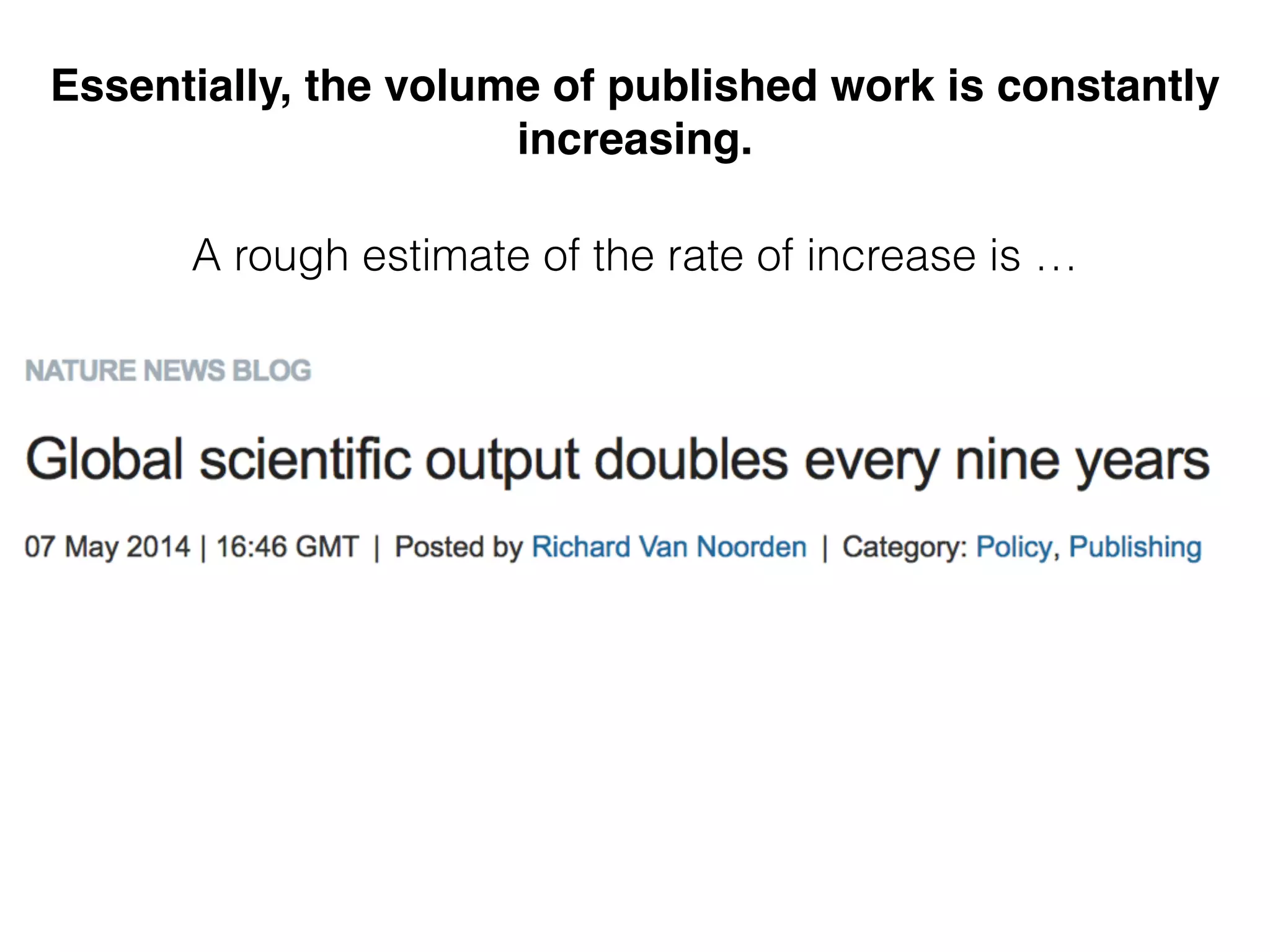
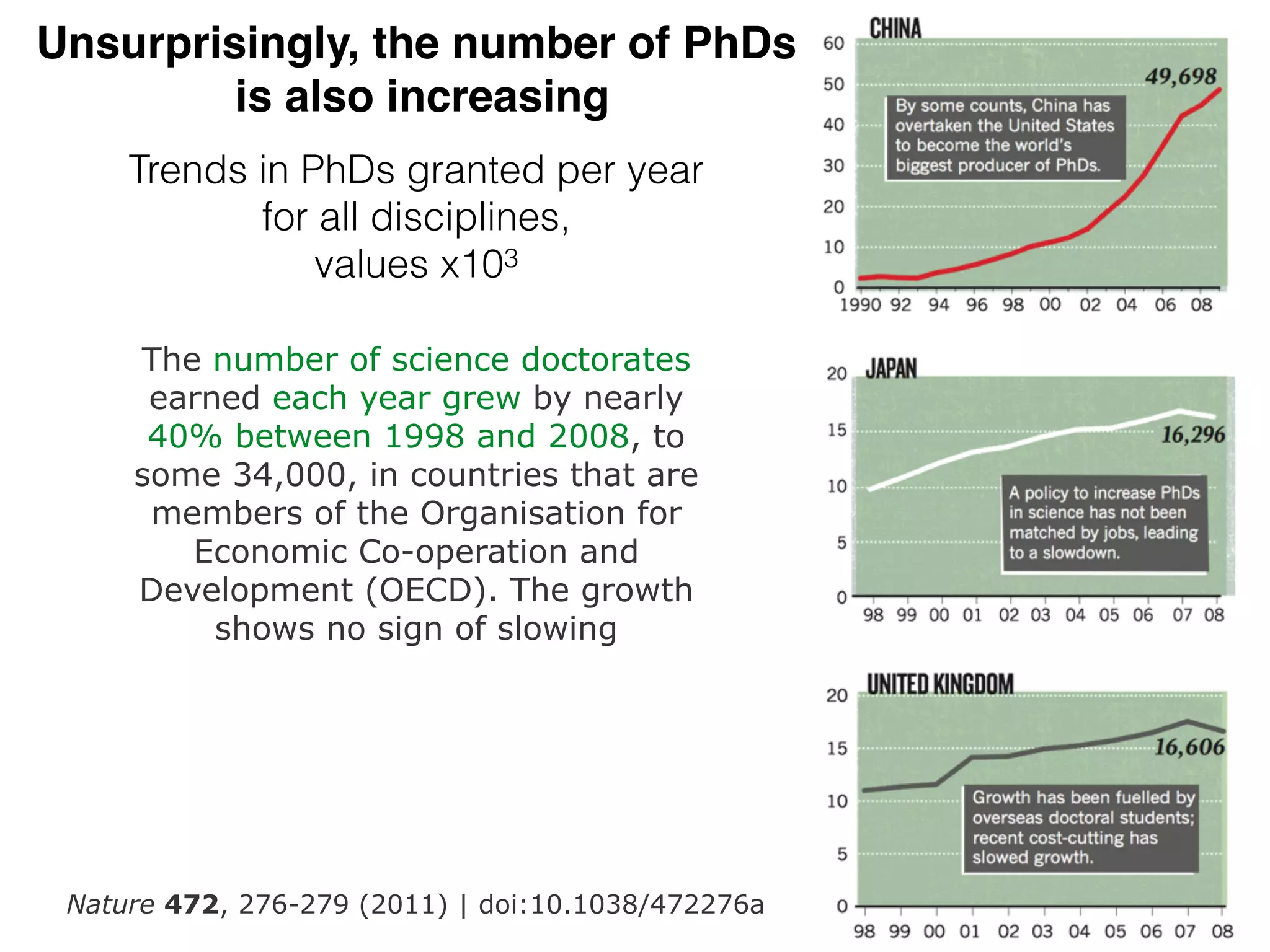
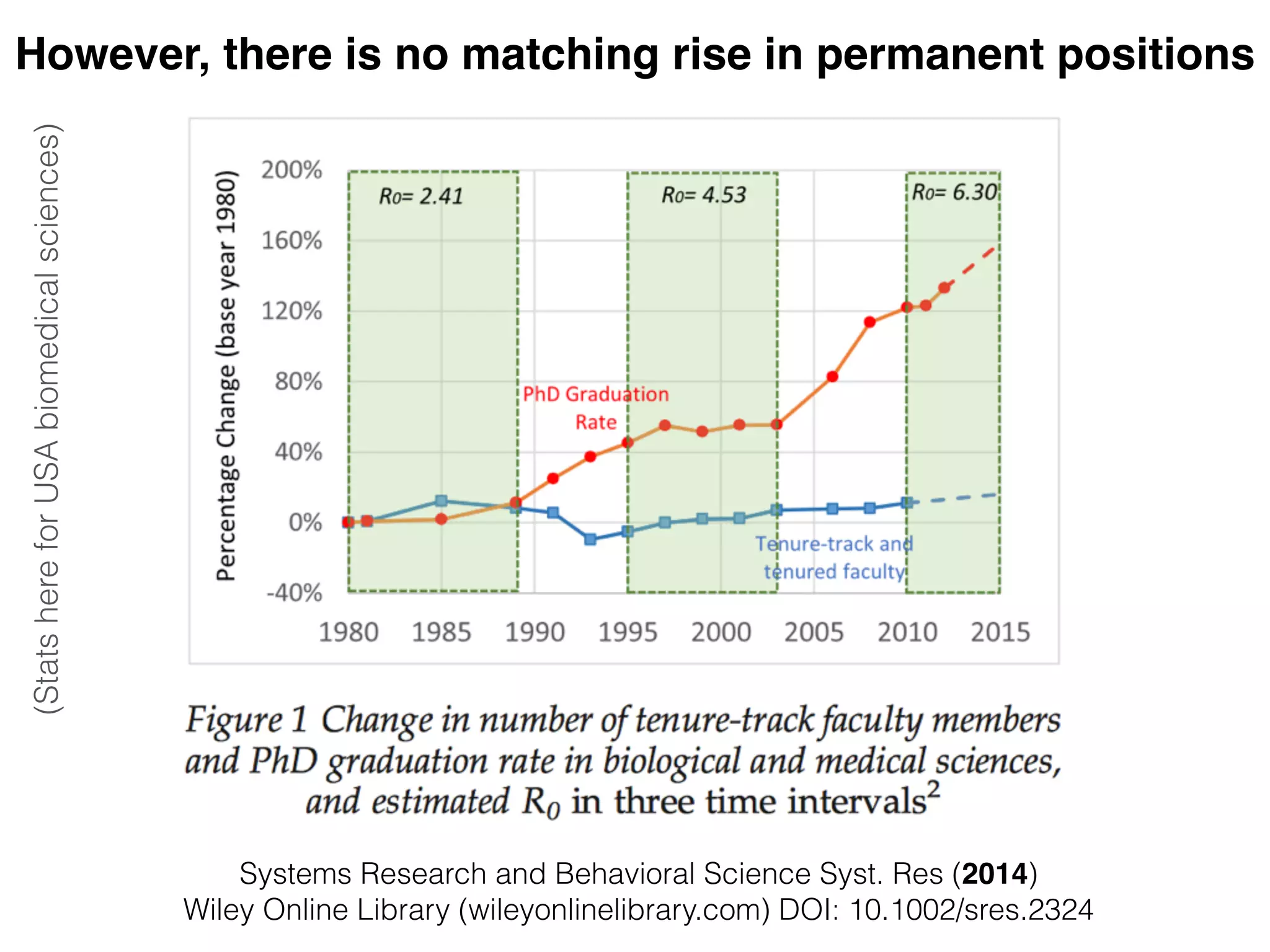
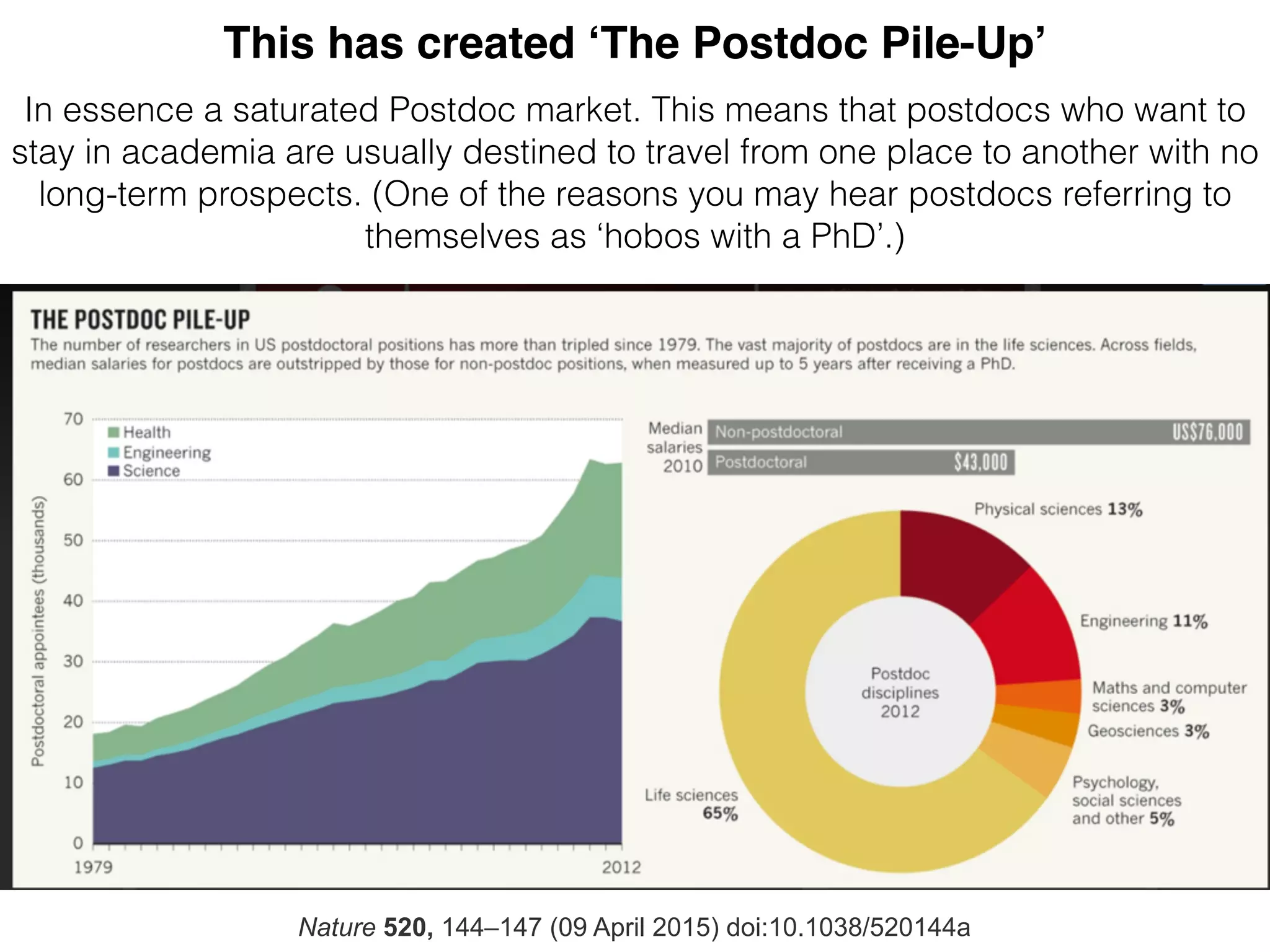
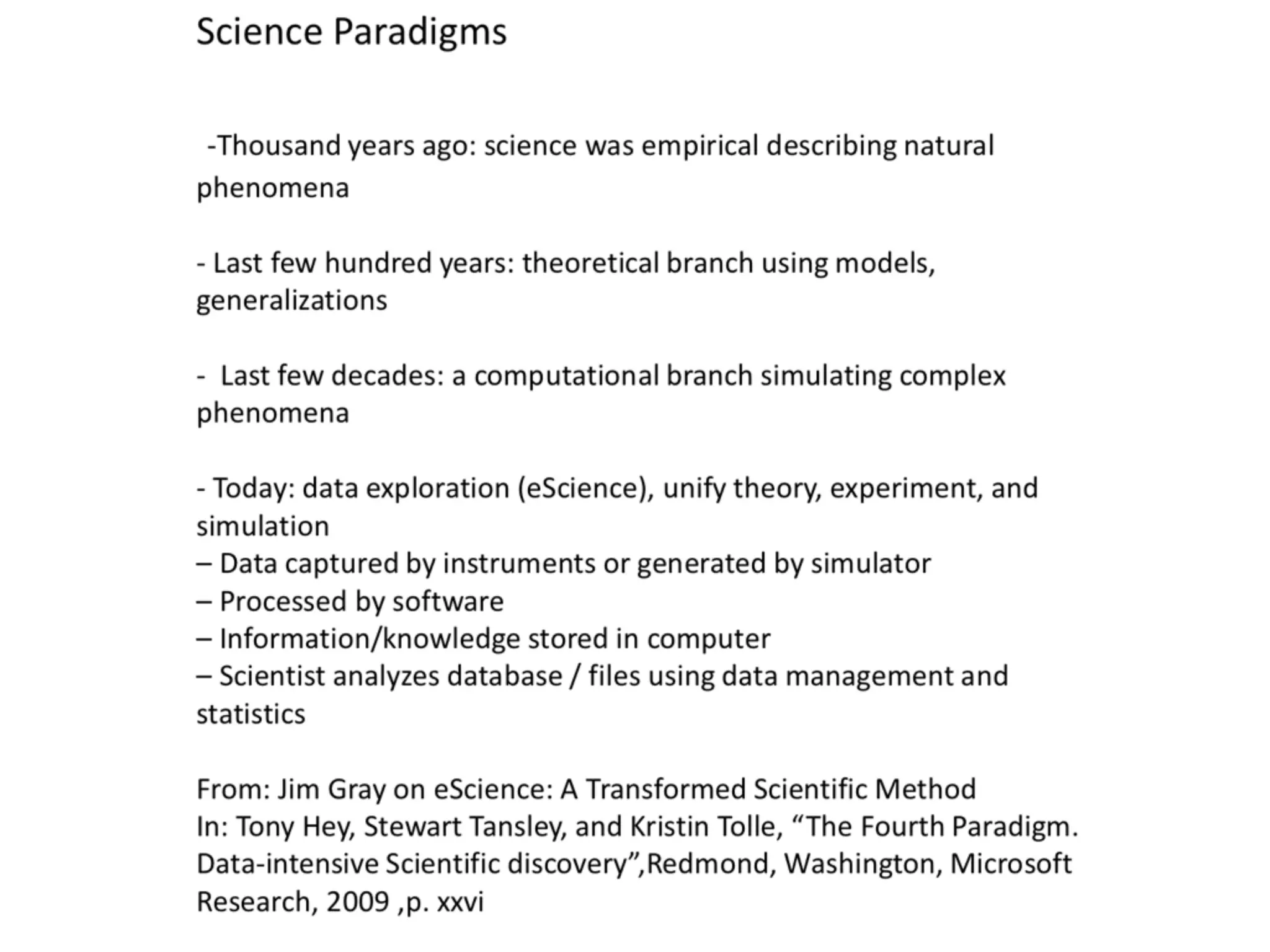
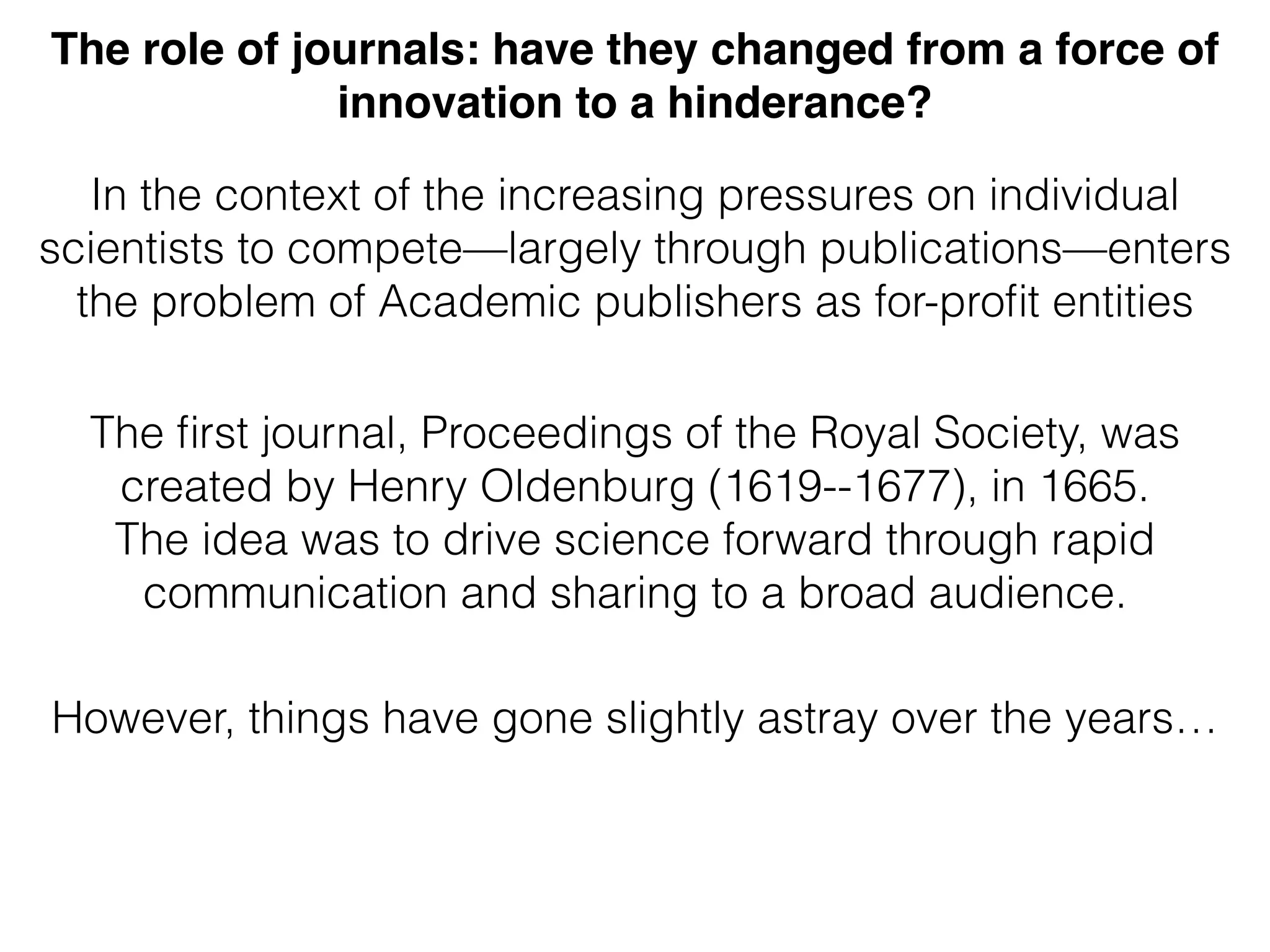
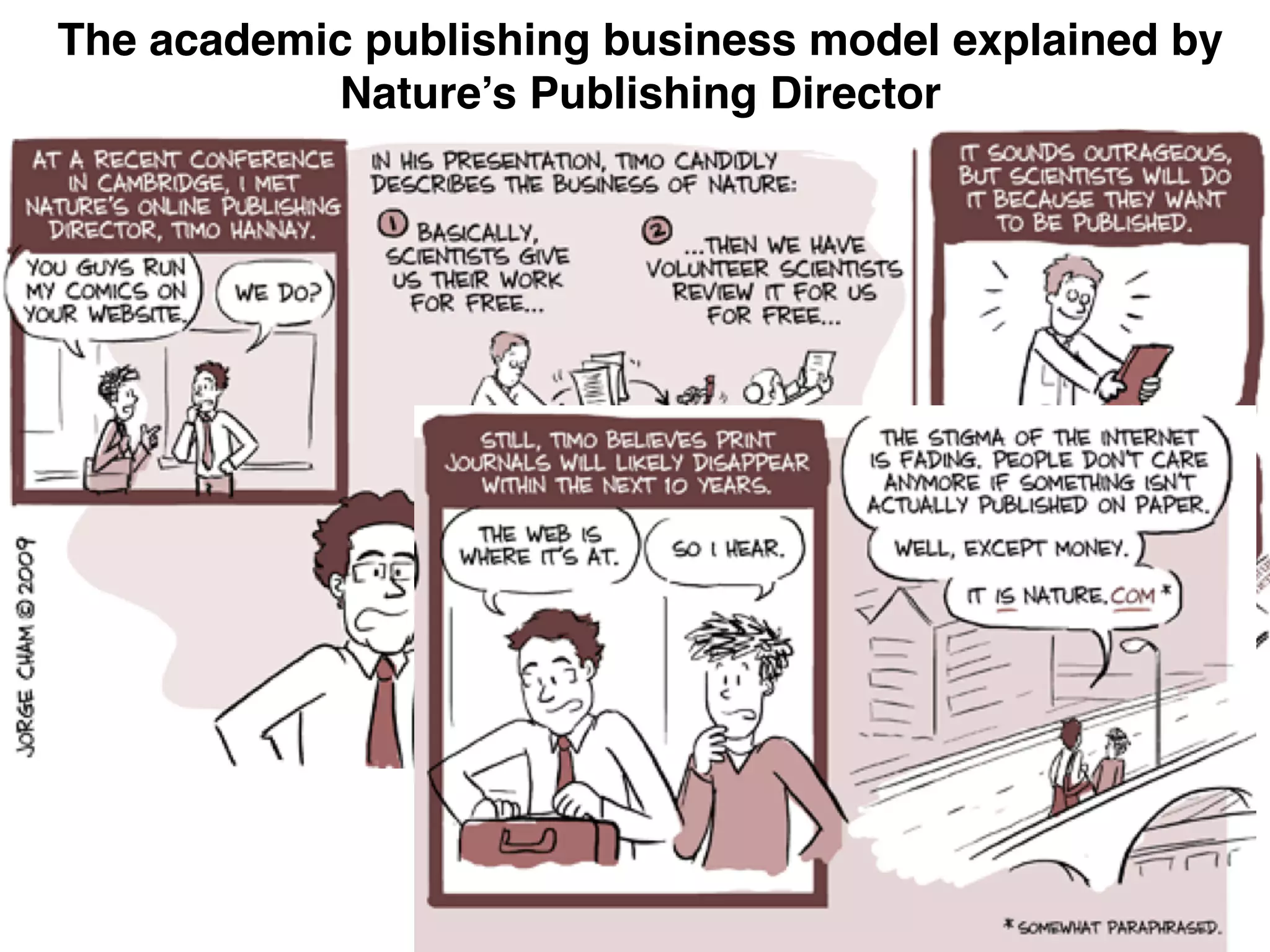
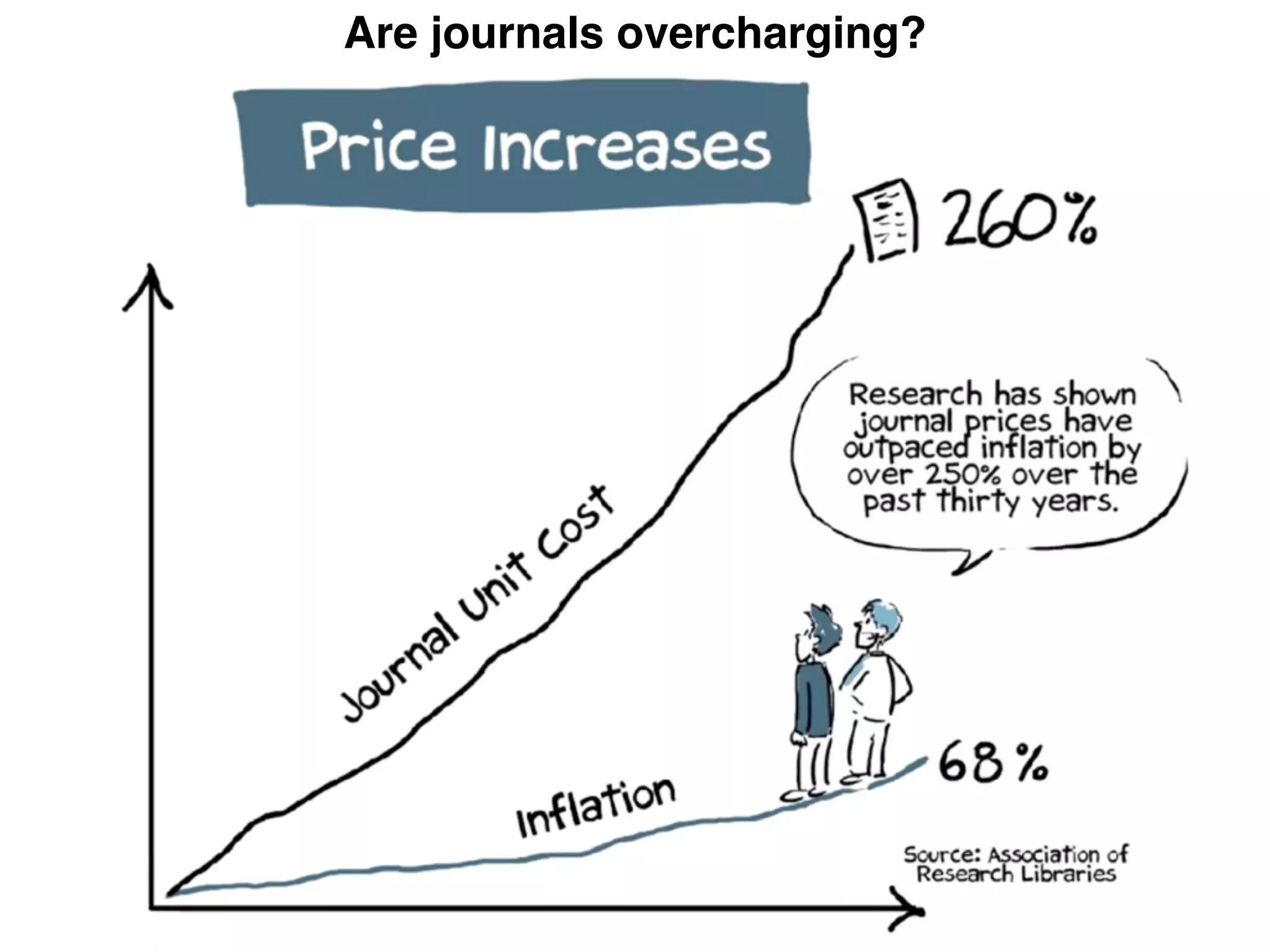
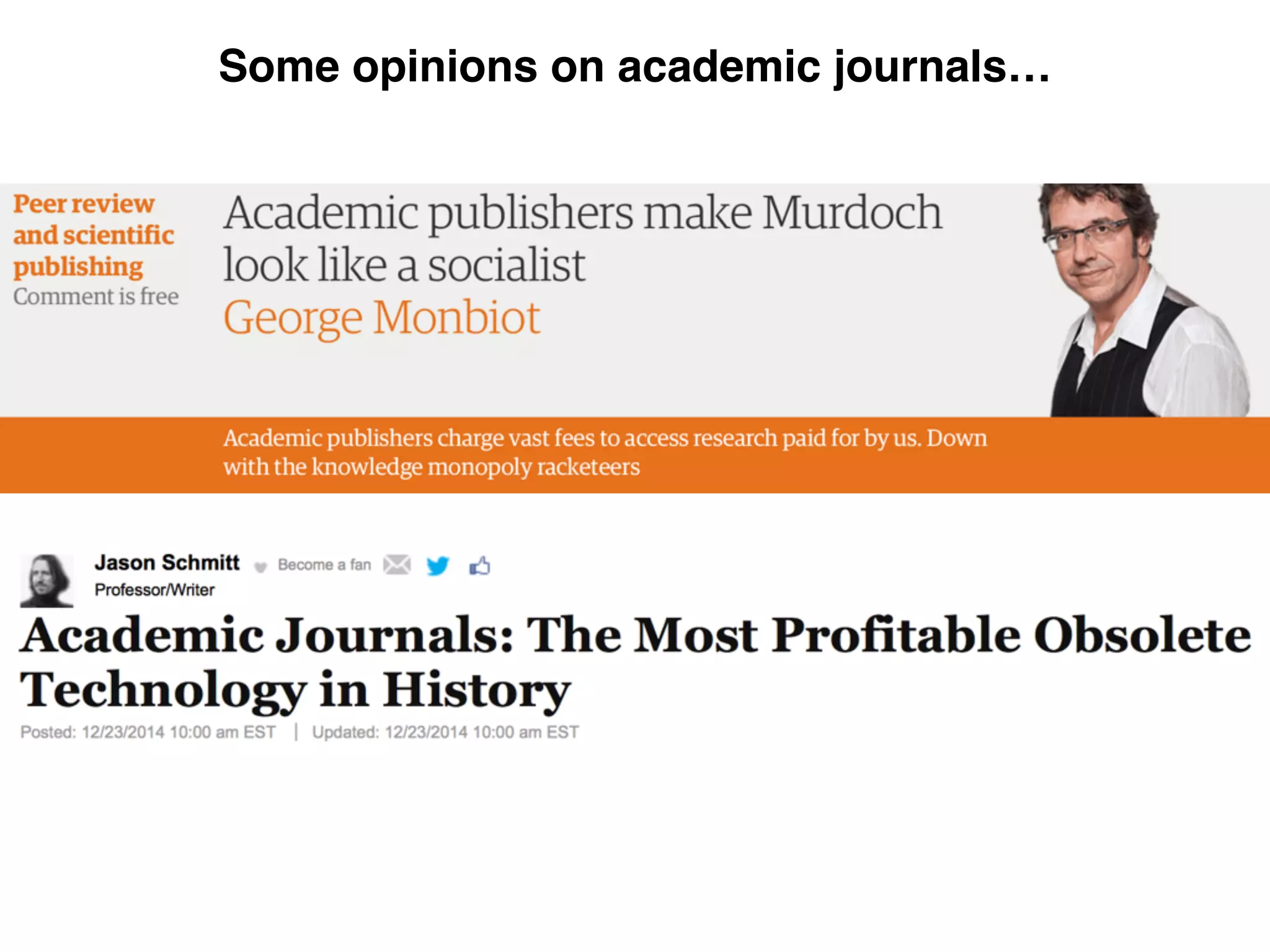
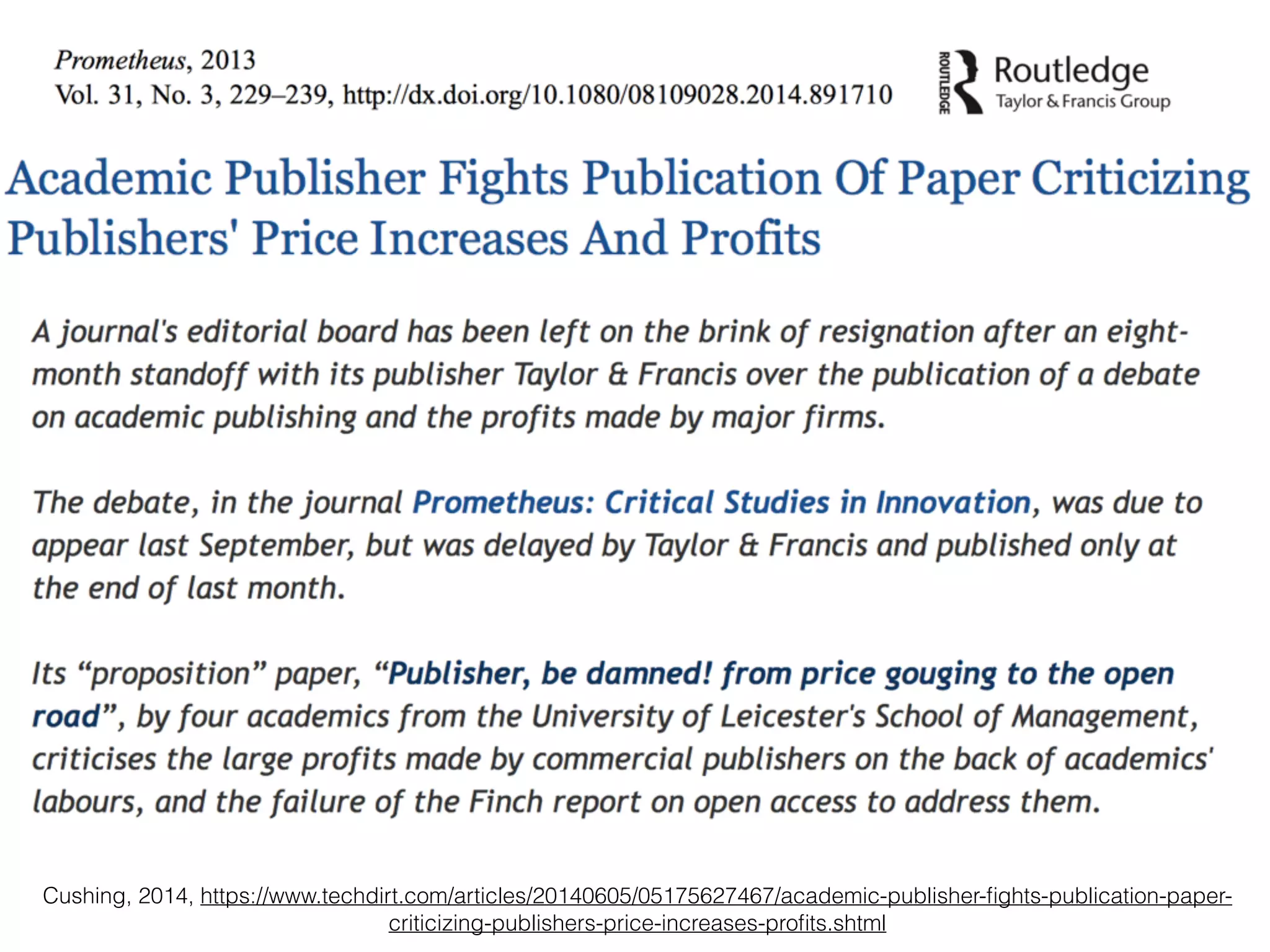
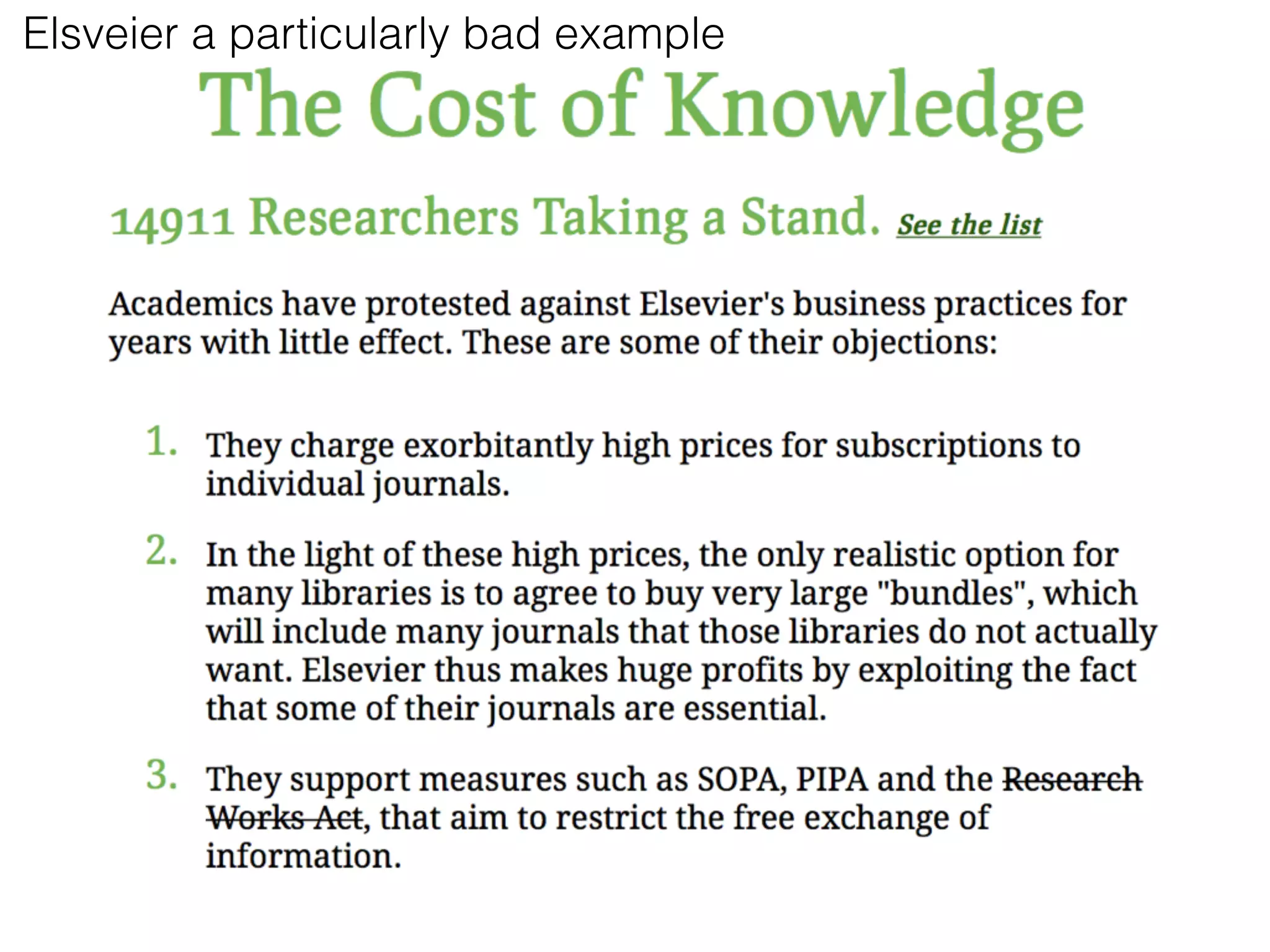
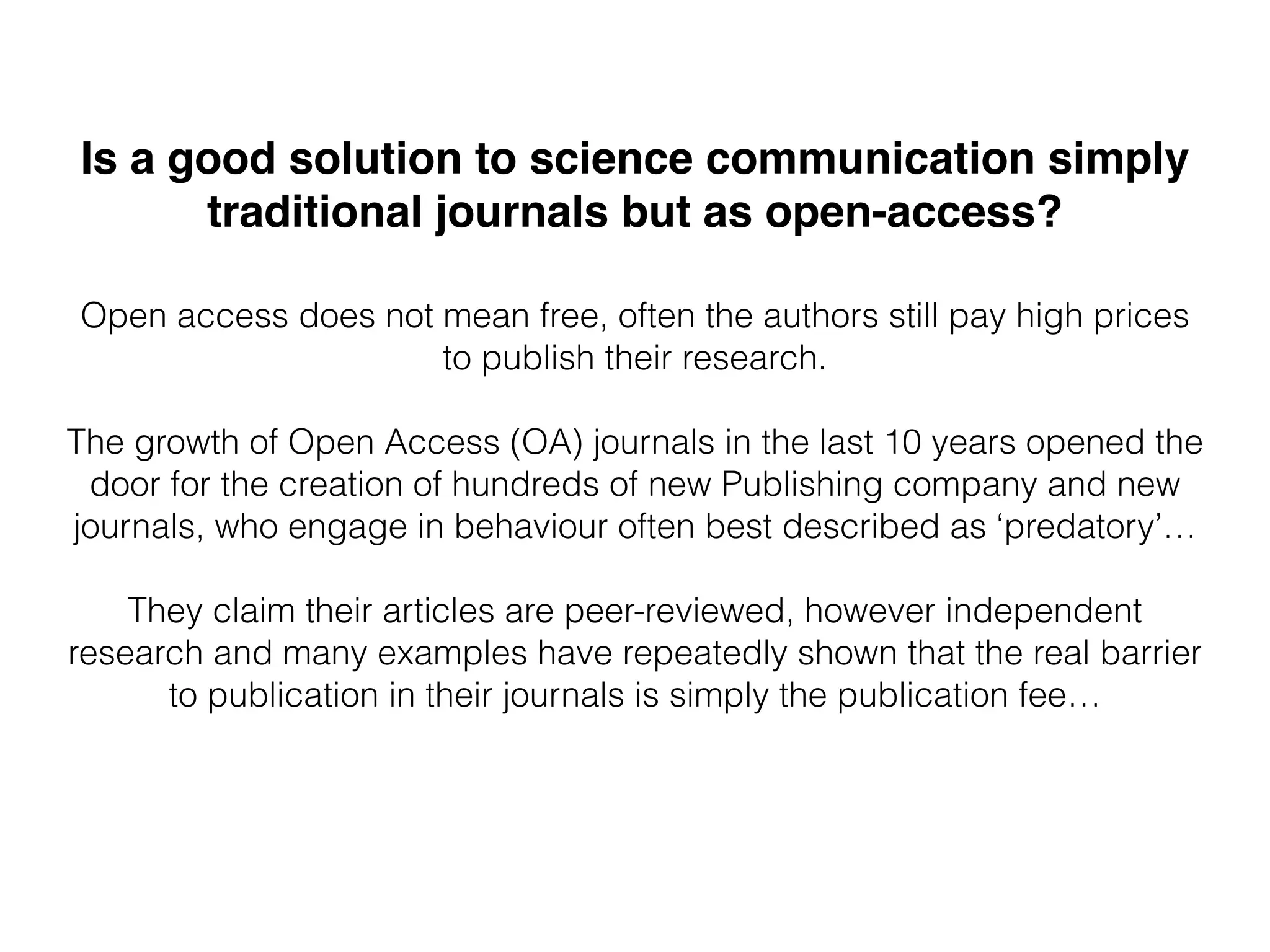
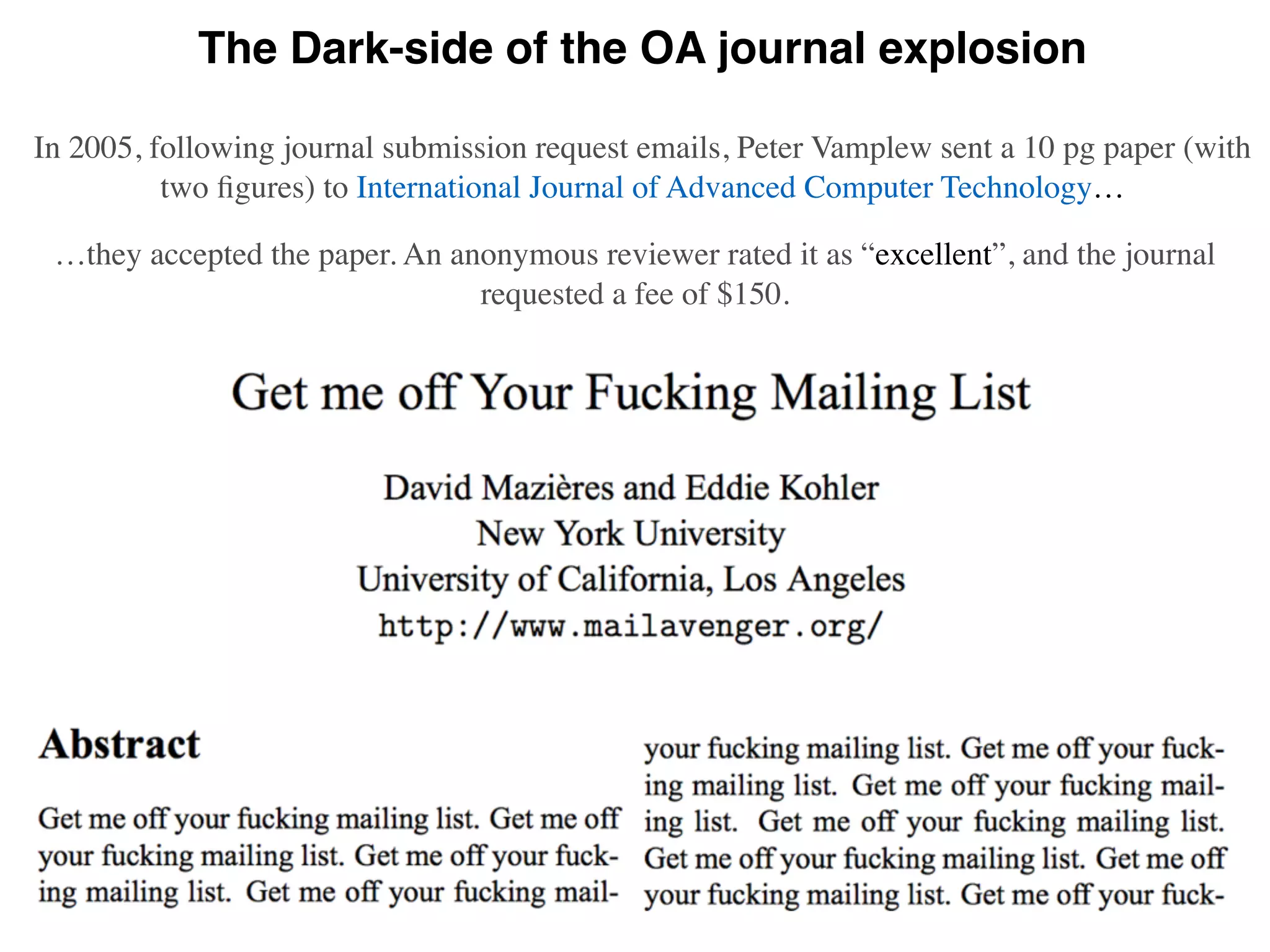
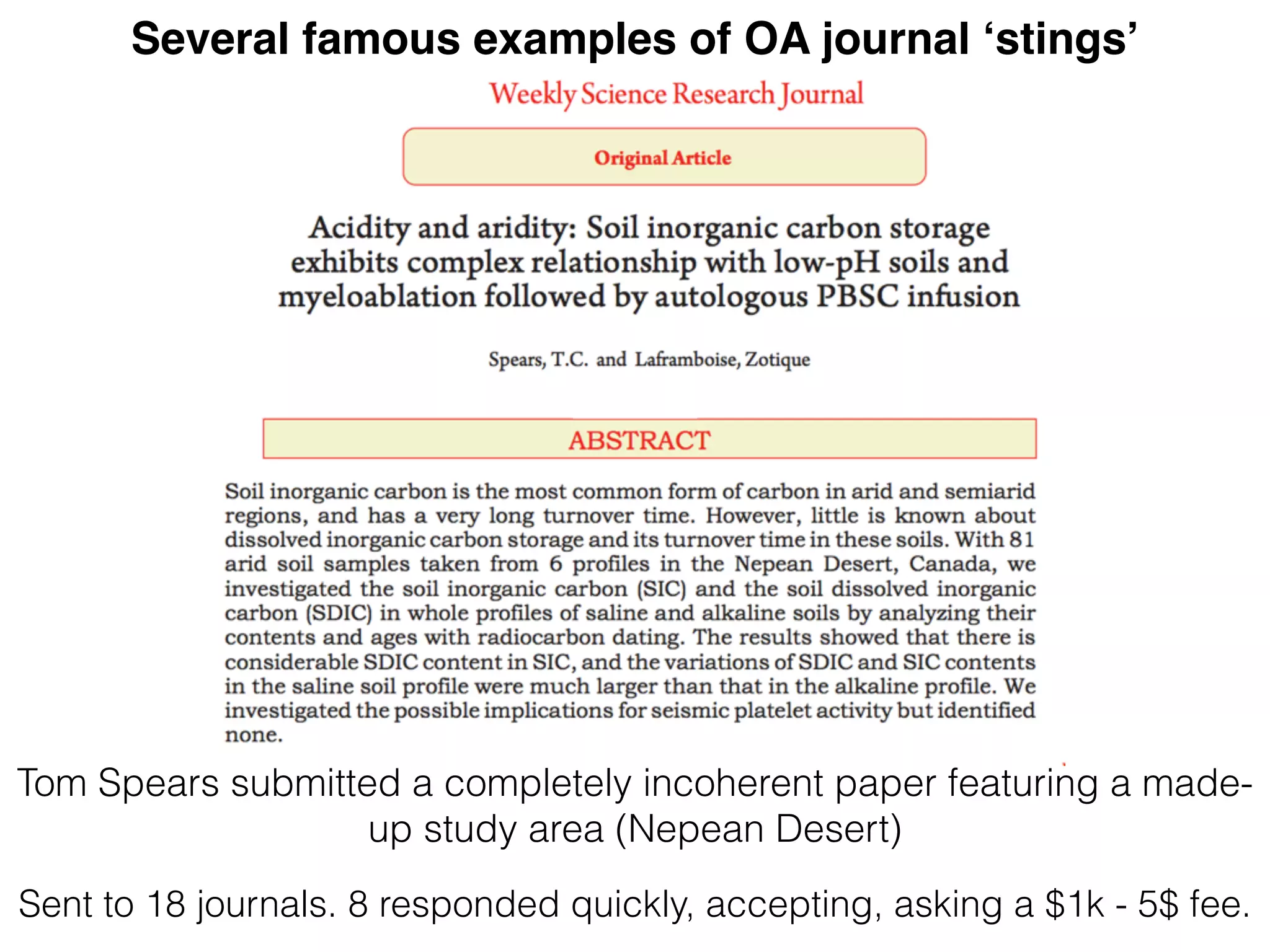
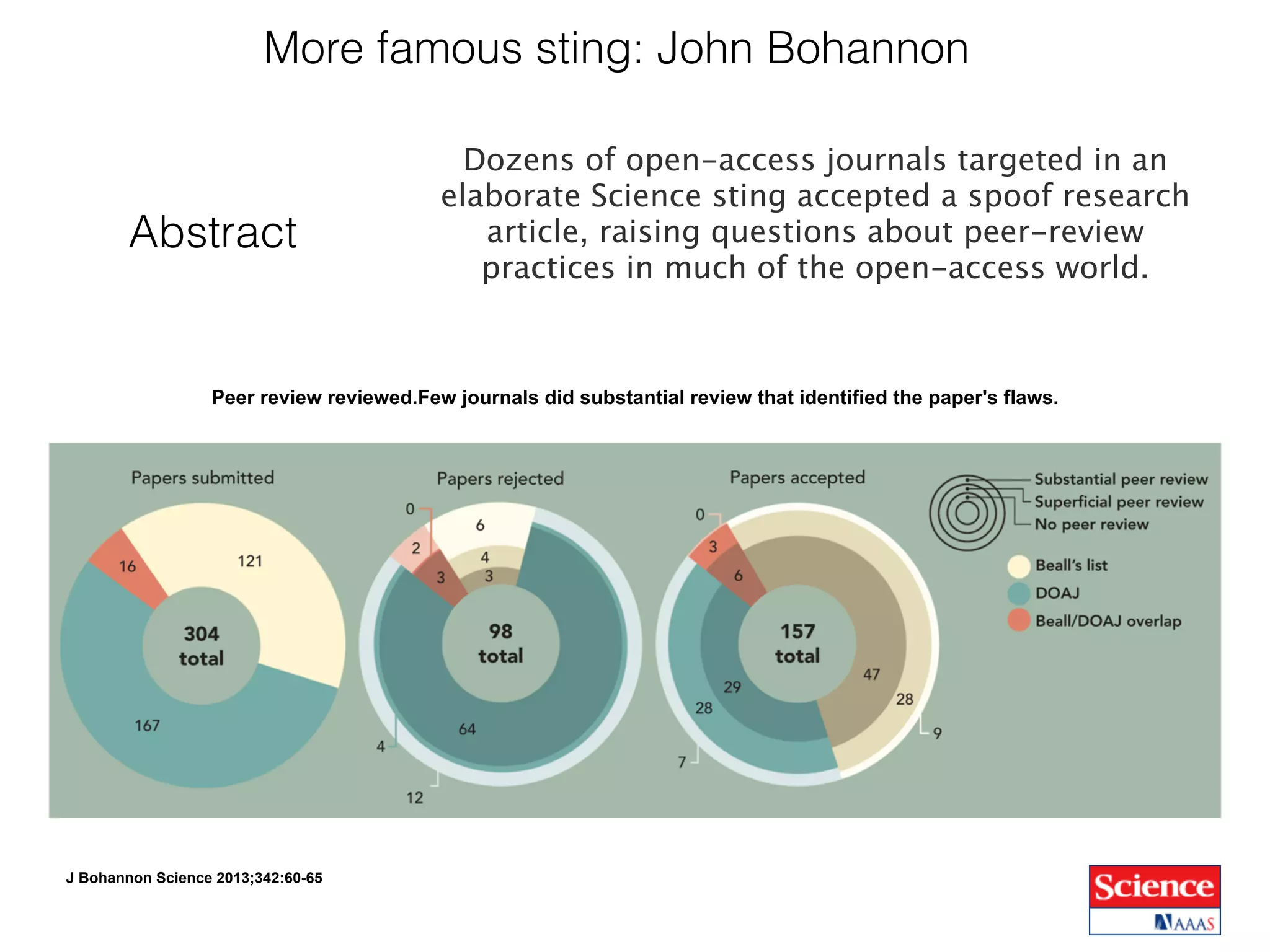
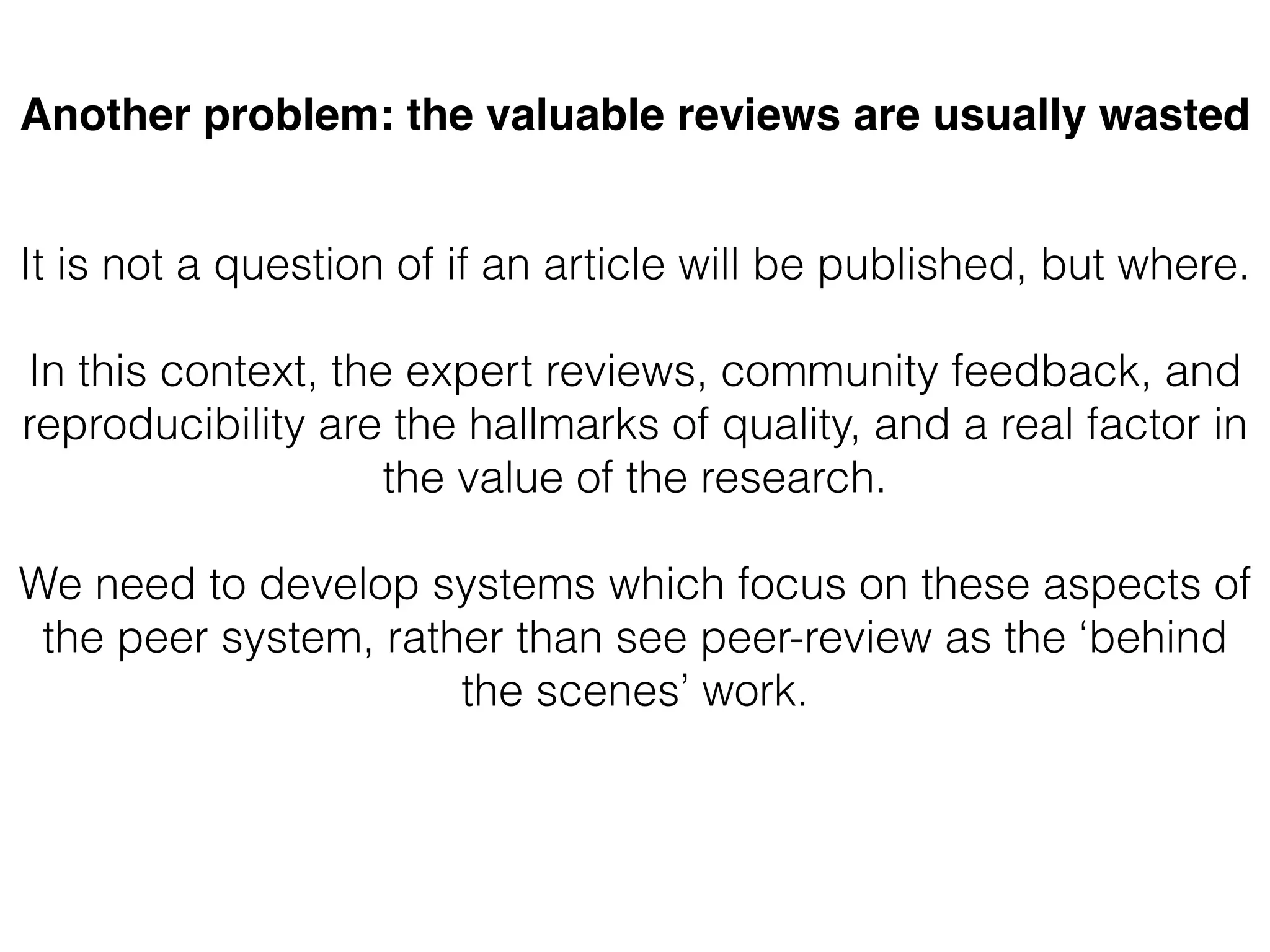
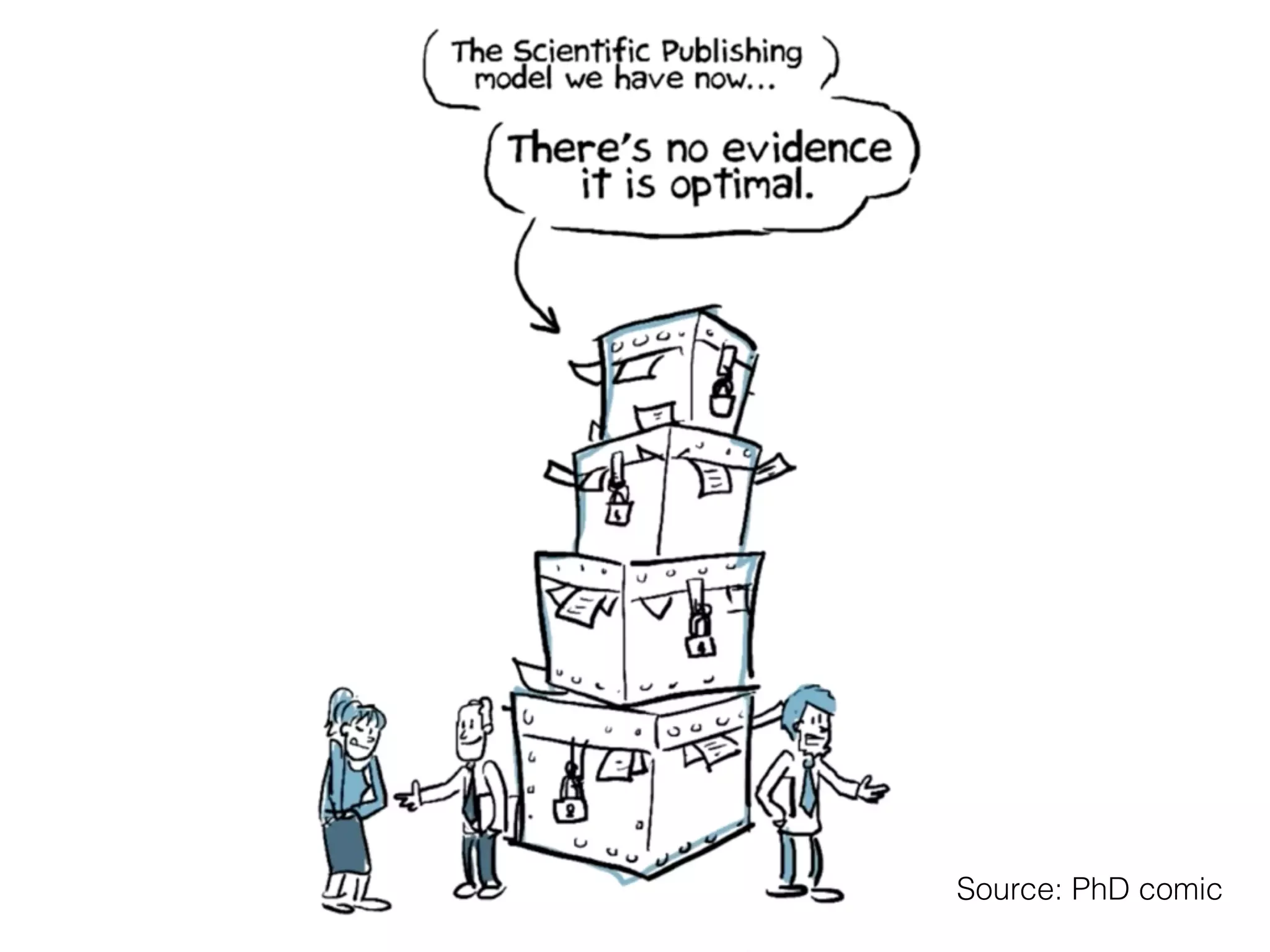
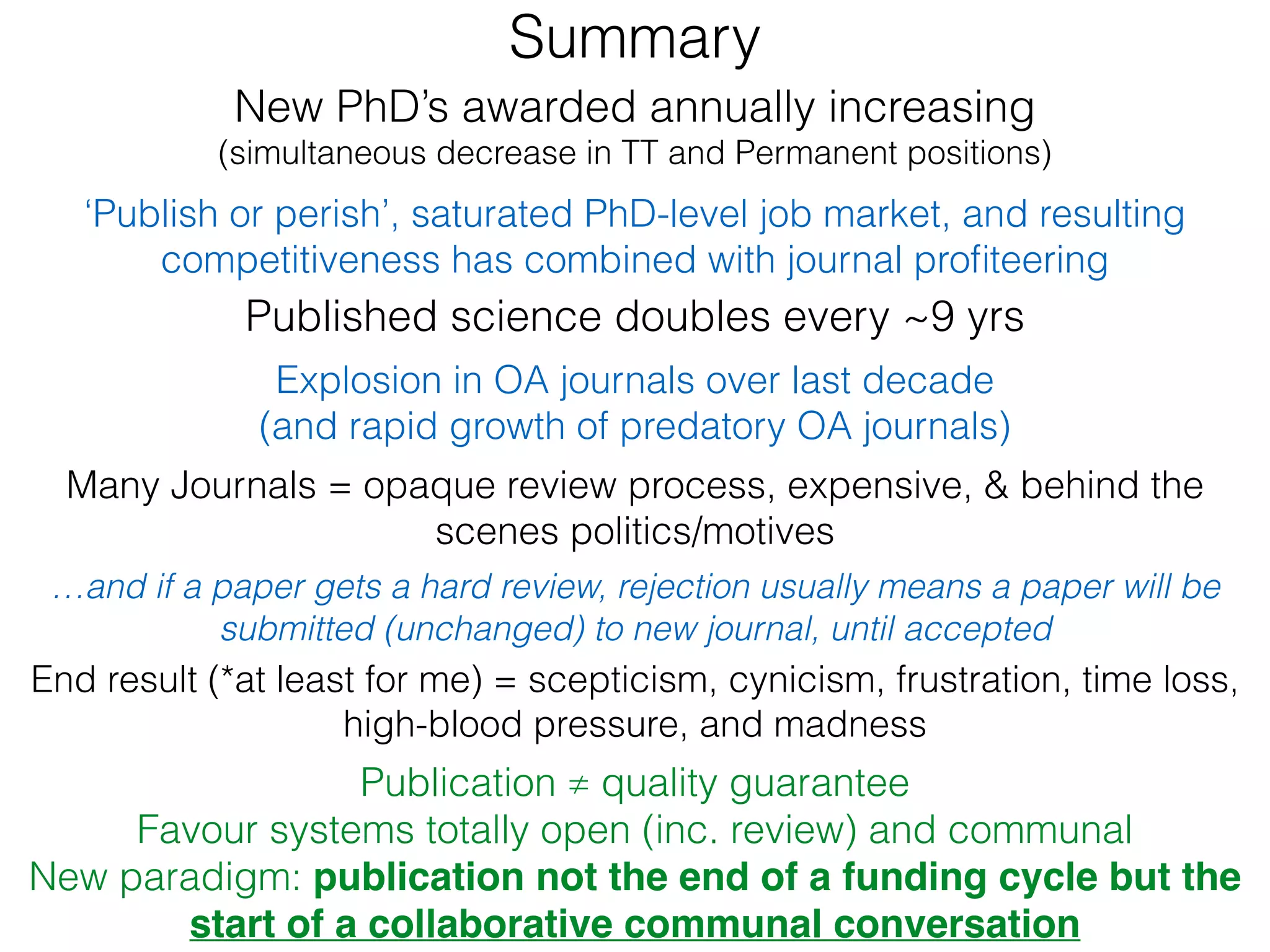
![My fantasy model of Science 2.0
Data, code, paper: all in one open repository (like ArXiV)
Version control system (like Github)
All researchers have unique ID profile (like RG/ORCID)
ID-tagged comments. Can be general, or specific:
specific comments tagged to sections, as a thread, including up-
vote system (like StackOverflow) on paper and comments.
Copying, and contributing (pull-requests) allowed
to create rapid-iterations and community refinement (like Github)
Vote-based score system, with scores contributing to different levels of
community privileges (like StackOverflow).
Score a measure of a researchers overall contributions (Like RG), > than
citation metrics [e.g. as bad papers often cited on purpose]
Needs shared super-computer-scale resources to re-run
experiments (Like Google Earth Engine)
(This model already exists for the open software we use every day. The model can be used for
research, and for lecture/course/textbook material too.)](https://image.slidesharecdn.com/opensciencethoughts-150508143848-lva1-app6891/75/Science-in-the-context-of-journals-Open-and-the-future-25-2048.jpg)